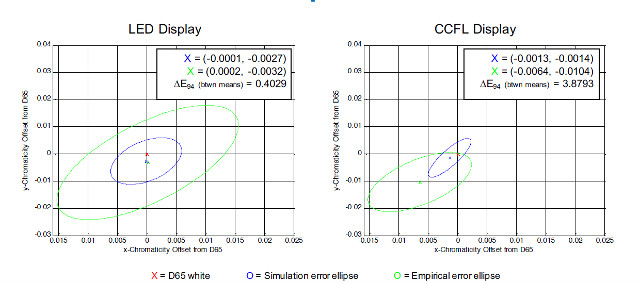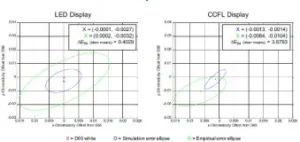Much of the color standards and color calibration methods and instruments are based upon the “standard observer.” This is supposed to represent the average human’s color perception, as defined in 1931. But there is much evidence to support the notion that this standard observer model was derived from a sample of 17 white anglo males mostly in their 30s. The limitations of this sample are becoming apparent, which was the subject of some papers and discussion at the SMPTE conference.
In a paper delivered by Matthew Donato from Imatest, he noted that colorimeters typically use the model developed in 1931 for the standard observer to measure the chromaticity points of an image. However, it has been observed many times that a measure of a calibrated white point on one display will match the measured results on another display, but the white patches look different. He says developing a mathematical model of human vision cannot be done with a single model as there is a wide variety of vision capabilities. And, the variability is becoming more pronounced as new and more narrowband light sources emerge.
Donato says that colorimeters using the CIE 1931 2-degree color matching function do not account for observer variability, but they can be used to measure and quantify it. In his paper, he described such tests.
The experiment presents calibrated D65 white point patches on a CRT display and on HD displays with CCFL and LED backlights. 34 observers adjusted the white points on the HD displays to match the CRT display. The adjusted white points were then remeasured with the colorimeter. The results from the real observers was also compared to the results from 13 simulated single user models (figure).

Donato says the results for the LED could be good enough to make a recommendation for an offset to be applied to colorimetry measurements that would allow the CRT and LED displays to measure and look the same.
Donato also used a simulation to extend the thinking to 2020 primaries. This analysis predicts even greater variability than with the LED or CCFL displays.
In another session, Francois Helt from Highlands Technologies Solutions asked, “Is there a Standard Observer in the House?” Like Donato, he sees calibration issues increasing with the expansion of lighting sources and the narrowing of primaries. Photometers which measure the spectrum of light should do a better job, but colorimeters, which use RGB filters to mimic human perception, will be challenged.

His talk dealt more with how we talk about color. For example, some cultures have no word for orange and one word for blue and green. A discussion of colors with these people is different than with English speakers. There are also experiments where you can show a familiar object with a known color repeated times, then change the color on the last flash. The person will not remember that last color.
Most interestingly, he said there is now growing evidence that as many as 50% of women and 10% of men are tetrachromatic, meaning they have photoreceptors in their eyes for four bands of light (red, blue and two green bands). Helt hypothesizes that these individuals will be better at color matching fabrics, paints and doing color grading than the “standard observer”.
Helt noted the deficiencies of the 1931 CIE 2-degree standard observer model and said that the model was modified in 1964 to include a 10-degree observation angle, which may be a better fit, but this was still based on a limited sample of 49 people.
In addition, most color perception studies have focused on color patches surrounded by a neutral gray background. But few if any studies look at doing moving image analysis. And we know that motion has an impact on our perception of color (even moving black and white images depending upon the display technology).

